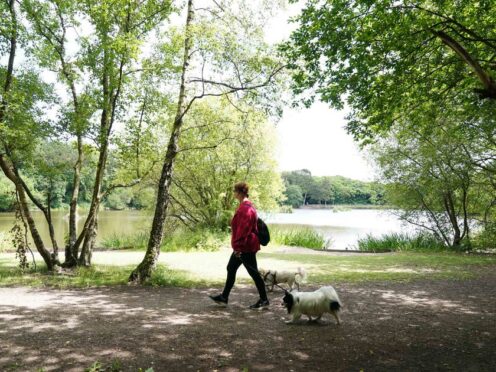Walking could be a cheap and easy way to prevent recurring back pain, scientists have said, after trials showed patients who went for daily strolls had fewer flare-ups.
Experts found people who walked five times a week for an average of 30 minutes each day, and received coaching from a physiotherapist, remained pain-free for nearly twice as long compared with those who did not receive any treatment.
Taking regular steps also improved patients’ quality of life and the amount of time they had to take off work almost halved, the researchers said.
They said the findings, published in the journal Lancet, show walking could have a “profound impact” on a condition that affects eight out of 10 people in the UK and is the leading cause of disability worldwide.
Mark Hancock, professor of physiotherapy at Macquarie University in Australia, said: “Walking is a low-cost, widely accessible and simple exercise that almost anyone can engage in, regardless of geographic location, age or socio-economic status.”
About 800 million people around the world have low back pain, and seven in 10 who recover from an episode have flare-ups within a year.
Currently, back pain management and prevention involves a combination of exercise, therapy and, in some cases, surgery.
But researchers said some forms of exercise are not accessible or affordable, and often need supervision.
Scientists followed more than 700 adults who had recently recovered from an episode of low back pain for up to three years.
Half of them were randomly allocated a tailored walking programme and education sessions from a physiotherapist, while the rest were assigned to a control group who were not provided with any specific intervention but could seek treatment if symptoms returned.
Prof Hancock said: “The intervention group had fewer occurrences of activity limiting pain compared to the control group, and a longer average period before they had a recurrence, with a median of 208 days compared to 112 days.”
He added: “We don’t know exactly why walking is so good for preventing back pain, but it is likely to include the combination of the gentle oscillatory movements, loading and strengthening the spinal structures and muscles, relaxation and stress relief, and release of ‘feel-good’ endorphins.
“And of course we also know that walking comes with many other health benefits, including cardiovascular health, bone density, healthy weight, and improved mental health.”
Dr Natasha Pocovi, a researcher at Macquarie University, said: “It (walking) not only improved people’s quality of life, but it reduced their need both to seek healthcare support and the amount of time taken off work by approximately half.
“Our study has shown that this effective and accessible means of exercise has the potential to be successfully implemented at a much larger scale than other forms of exercise.”
Commenting on the study, Professor Kamila Hawthorne, chairwoman of the Royal College of GPs, said: “Back pain affects millions of patients, and can have a serious impact on their quality of life – in some cases to the extent they struggle to carry out everyday tasks without pain.
“As such, we always welcome research into a condition that can be so debilitating, and it’s important this is taken on board as clinical guidance is developed and updated.
“This study backs up what we already know – that walking, even in small amounts, can be helpful for back pain.
“We also know it can have other benefits, for example, for people’s mental health and wellbeing, which is often impacted for those living with pain.
“As such, GPs will encourage patients with back pain to take moderate exercise, where appropriate and in line with clinical guidelines, but we know that for some patients this won’t be possible, or will be very difficult.”
Dr Athalie Redwood-Brown, senior lecturer in physical activity and health at Nottingham Trent University’s Department of Sport Science, said: “Walking helps alleviate mechanical back pain by improving muscle strength, flexibility, and circulation, which are crucial for spinal health.
“This finding has the potential to transform preventive care, offering a scalable solution that could benefit millions.”
